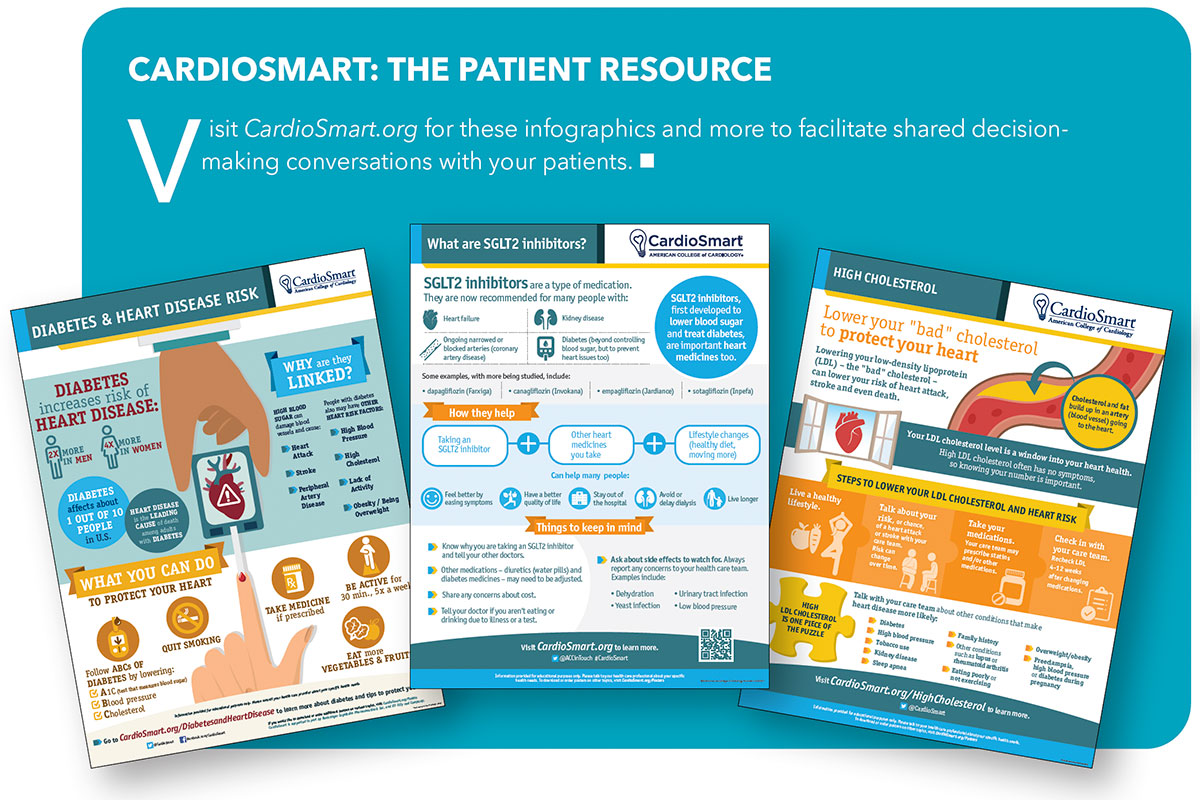Prioritizing Health | Prevention: Early is Better, But It’s Never Too Late

We're never too young for diabetes to substantially increase the risk of atherosclerotic cardiovascular disease (ASCVD) and we're never too old to experience the benefits of lipid-lowering therapy (LLT). Two recent studies in JACC provide more evidence to help fine-tune prevention efforts across the lifespan of our patients. Pro tip: Remember 40 years old for type 2 diabetes (T2D) and 70 years old for LLT.
T2D: Increased CV Risk Comes a Dozen Years Earlier
Among women and men without known ASCVD in a cohort study from Denmark, a diagnosis of new onset T2D at any age increased their 10-year risk of cardiovascular disease, compared with sex- and age-matched individuals. For those in younger age groups when it was diagnosed, the 10-year risk was twofold to threefold higher – and this translated into cardiovascular disease occurring 12 years or less earlier than in the matched general population. This acceleration was more apparent at younger ages, starting at ages 40 to 49.
The study followed a cohort of 142,587 patients diagnosed with T2D between 2006 and 2013 and a cohort of 388,410 sex- and age-matched individuals from the general population. At 10 years, there were 52,471 cardiovascular disease events, defined as a composite of nonfatal myocardial infarction, nonfatal stroke and fatal cardiovascular disease, with each outcome assessed individually.
Transform CVRiD
Click here for ACC's free online course, Transforming Cardiovascular Risk in Diabetes. Get up to speed on incorporating SGLT2 inhibitors and GLP-1R RA drugs into practice and how to implement this guideline-directed medical therapy with a care team.
The overall absolute 10-year risk was 12.0% in patients with T2D. The relative increase in cardiovascular disease risk with T2D was higher in younger than older patients, with hazard ratios ranging from 2.62 in those younger than 40 years old to 1.30 for those 80 or older.
Those who were aged 40 to 49 years at T2D diagnosis had the largest difference in 10-year risk (6.1% vs. 3.3% for the general population). A substantial difference between cohorts was seen for the age at which a given 10-year risk was reached: in men with and without T2D, a 5% risk was reached at age 43 vs. age 55, and among women with and without T2D, a 5% risk was reached at ages 51 and 61, respectively.
Christine Gyldenkerne, et al., write their "data indicate that all patients with newly diagnosed T2D should be considered at high cardiovascular disease risk" and that "intensified preventive interventions should therefore be considered to reduce the excess cardiovascular disease risk and healthy life-years lost among these patients."
What does this mean for cardiovascular professionals? In an accompanying editorial comment, Michael J. Blaha, MD, MPH, and Michael Khorsandi, MD, write that "we must adapt to team-based treatment of obesity and the early cardiovascular manifestations of T2D" and that these data remind us that "we have entered an era where metabolic disease must be a part of cardiologists' education and practice." Click here to read more in JACC.
LLT: Effective at All Ages
The clinical effectiveness of lowering LDL-C with LLT for primary prevention of ASCVD was similar among individuals younger and older than 70 years, according to another cohort study from Denmark with 65,000 individuals 50 years and older.
Results showed the median LDL-C reduction was 1.7 mmol/L for individuals younger and older than 70 years. Notably, both age groups experienced the same degree of benefit, with each 1 mmol/L reduction in LDL-C significantly associated with a lower risk of major vascular events (HR, 0.76 younger and HR, 0.77 older). Similar results were observed across all secondary analyses.
"Evidence from clinical trials of treatments lowering LDL-C has shown that the relative risk of major vascular events is reduced by about 20% for each 1 mmol/L (~40 mg/dL) lowering of LDL-C, which is remarkably similar with the 23% lowering in this Danish population study," writes Melvyn Rubenfire, MD, FACC, on ACC.org. Interestingly, he adds, the frequency of the physicians prescribing low-, moderate- and high-intensity LLT was similar in older and younger groups. Click here to read more in JACC.
Clinical Topics: Dyslipidemia, Prevention, Lipid Metabolism, Nonstatins
Keywords: ACC Publications, Cardiology Magazine, Diabetes Mellitus, Type 2, Cardiovascular Diseases, Cholesterol, LDL, Primary Prevention
< Back to Listings


